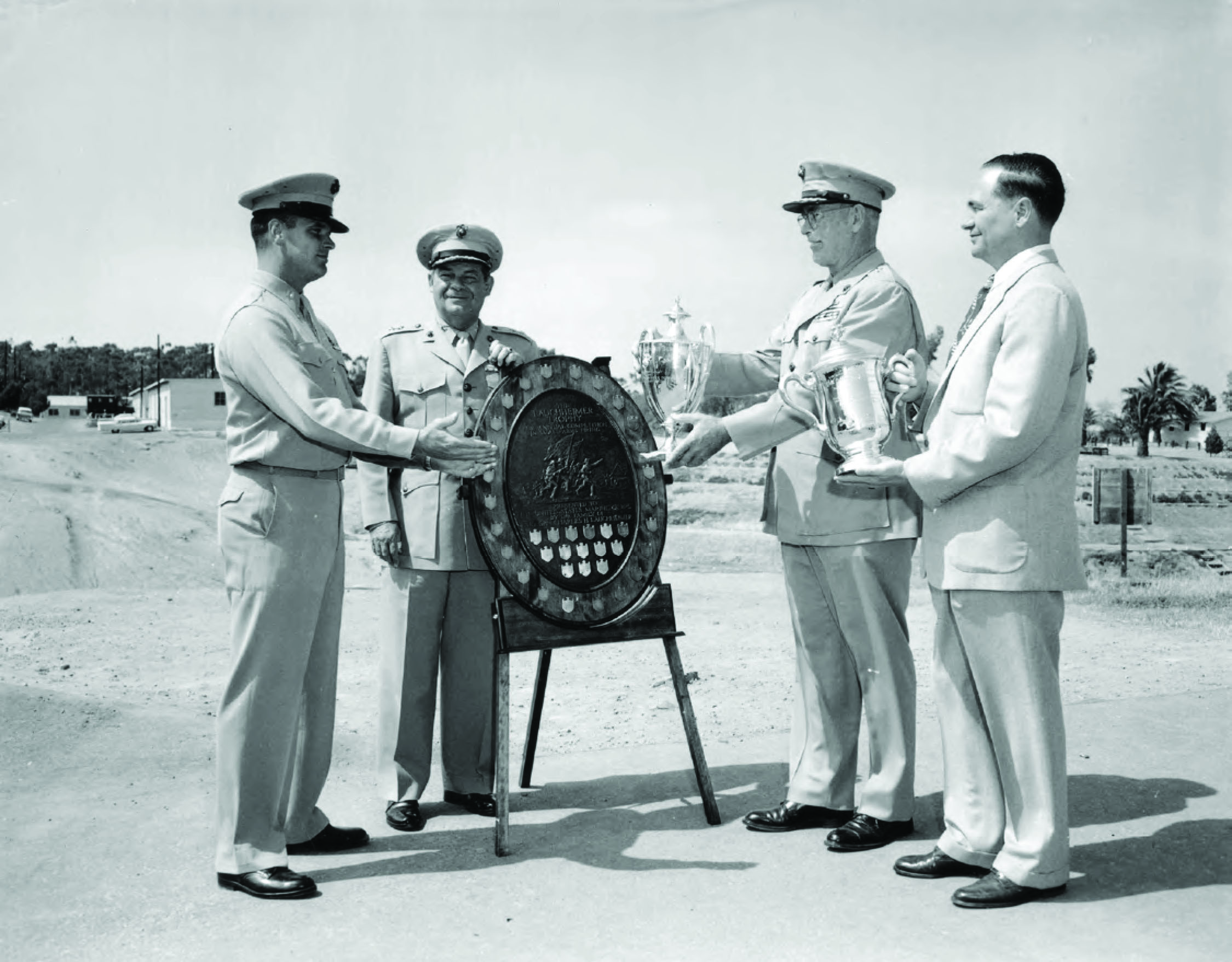
The Life of Lauchheimer: The Man Behind the Corps’ Top Shooting Trophy
By: Col Dwight H. SullivanPosted on March 15, 2024
This month, the Marine Corps’ top shooters will gather at Marine Corps Base Quantico to compete for the Lauchheimer Trophy—the award for the highest aggregate rifle and pistol score at the Championship Match. Who was Lauchheimer, and why is the Marine Corps’ most prized shooting trophy named after him?
Charles Henry Lauchheimer was born on Sept. 22, 1859, the fifth of Meyer and Babeth Lauchheimer’s nine children. His parents had immigrated from Bavaria to Baltimore, Md., where his father cofounded a successful clothing manufacturing company. The family worshiped at the city’s Oheb Shalom synagogue.
In June 1877, Lauchheimer graduated from Baltimore City College, a public secondary school. He won a Peabody Prize and a $50 cash award for finishing fifth in his class. That summer, Congressman Thomas Swann of Baltimore held competitive examinations to select his West Point and Naval Academy nominees. Swann limited the competition to Baltimore City College students and graduates. Among six applicants vying for the nomination, Lauchheimer emerged victorious.
Lauchheimer performed well at the academy, graduating in the top fourth of the class of 1881. He was popular with his fellow cadet midshipmen, as Naval Academy students were then known. In his second year, he and several classmates had been restricted to the Naval Academy’s yard due to disciplinary infractions, depriving them of Saturday afternoon off-base liberty. In response, they sewed bedsheets together to create an enormous banner on which they wrote, “Give us liberty or give us death.” They displayed their makeshift protest sign on the front of their barracks, facing the superintendent’s quarters. The ringleader of that prank was Lauchheimer. Years later, he was elected the president of his alumni class.
When Lauchheimer attended the Naval Academy, the cadet midshipman training program lasted six years. The final two years were spent at sea. Lauchheimer was assigned to USS Richmond, the Asiatic Station’s flagship, for most of his tour. In June 1883, the class of 1881 returned to Annapolis to take a final examination. In the era of a constricted Navy, commissions were available for only 23 of the 86 test takers. The final examination results elevated Lauchheimer to 14th in his class. Preferring the Marine Corps to the Navy, he requested and received one of 10 available Marine commissions. Lauchheimer and nine of his classmates became the first Naval Academy graduates to serve as Marine Corps officers.
Second Lieutenant Lauchheimer received his Marine Corps officer indoctrination at the Brooklyn Navy Yard’s Marine Barracks. There, he and his newly commissioned classmates fell under the tutelage of Colonel Charles Heywood. The tall, imposing colonel was a Civil War veteran who went on to become the Marine Corps’ ninth Commandant.
Lauchheimer assumed command of USS Ossipee’s 28-member Marine guard at Philadelphia’s League Island Navy Yard. On ship, they patrolled the Suez Canal and the Western Pacific. During the cruise’s second year, Lauchheimer suffered a severe bout of typhoid fever, which he attributed to the drinking water in Nagasaki, Japan. He spent 70 days on the sick list.
The highlight of the old wooden sloop’s Asian cruise occurred in August 1886. Tensions were building on the Korean peninsula amid fear of Chinese intervention. When a Chinese gunboat escorted six troop transports into the Korean port of Chemulpo, the U.S. Minister Resident and Consul General in Seoul telegraphed Ossipee’s captain, imploring him to send “a guard of 20 men to protect the Legation.” The following afternoon, Lauchheimer led Ossipee’s Marine guard from the ship’s berth in Chemulpo to the U.S. legation in Seoul. There, the Marines provided security until reboarding Ossipee four days later, the perceived crisis having passed.
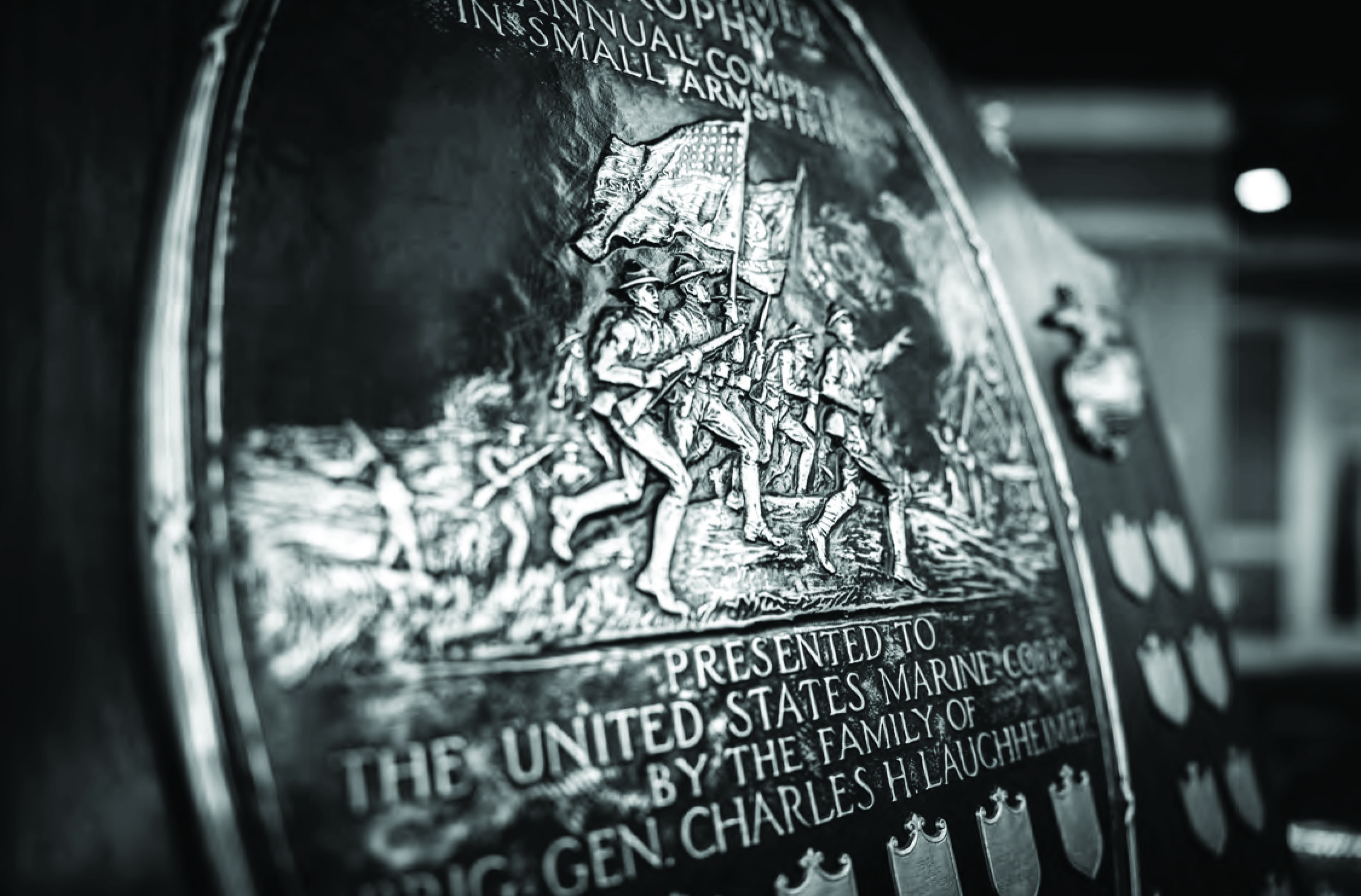
After Ossipee returned to the United States, the Marine Corps selected Lauchheimer for advanced military training. He attended the Naval Torpedo School in Newport, R.I., in the summer of 1887, and after completing the three-month program, he studied at the Naval War College, then only in its third year.
When he reported to his next duty station at Marine Barracks Washington, D.C., he decided to leave the Marine Corps—but then changed his mind after almost a year of leave. Eight months into that leave period, he wrote to his Naval Academy classmates that he “found the atmosphere of civil life [to be] frigid.” He returned to duty, promoted to first lieutenant, and, in 1890, began a 16-month tour commanding USS Enterprise’s Marine guard. Following that shipboard assignment, Lauchheimer spent five months on recruiting duty, looking for a few good men in his hometown of Baltimore. His career took a pivotal turn when he reported for duty in the office of the Judge Advocate General of the Navy (OJAG) in March 1892.
In October, he enrolled in Columbian University’s law school (since renamed George Washington University Law School). Classes started at 1800, allowing him to attend while still working at OJAG in the nearby State, War, and Navy Building (now known as the Eisenhower Executive Office Building). When Laucheimer completed the two-year program, he received an honorable mention for best examination for the Bachelor of Laws degree.
Lauchheimer would spend the rest of his Marine Corps career as a staff officer, and with the aid of his law education, he excelled as a judge advocate. His litigation work in both court-martial and civilian courts won accolades. The Government Printing Office published two editions of a procedural guide that he prepared for naval courts and boards. At the Naval War College, he also delivered well-received lectures that were published in the U.S. Naval Institute’s professional journal, Proceedings.
Starting in 1899, Lauchheimer experienced a meteoric rise in rank, jumping from first lieutenant to colonel in just six years. During his seventh year at OJAG, he underwent a rigorous two-day promotion examination. Following a medical exam, he was tested on administration, field engineering, minor tactics, military law and infantry fire discipline. On the examination’s second day, he conducted a parade and drill practical exercise followed by oral examinations in artillery mechanical maneuvers, small arm firing regulations and naval gunnery. Lauchheimer passed the examination. He did best in military law, obtaining a perfect score. Probably reflecting his extended time away from troop handling, his lowest score was in drill regulation.
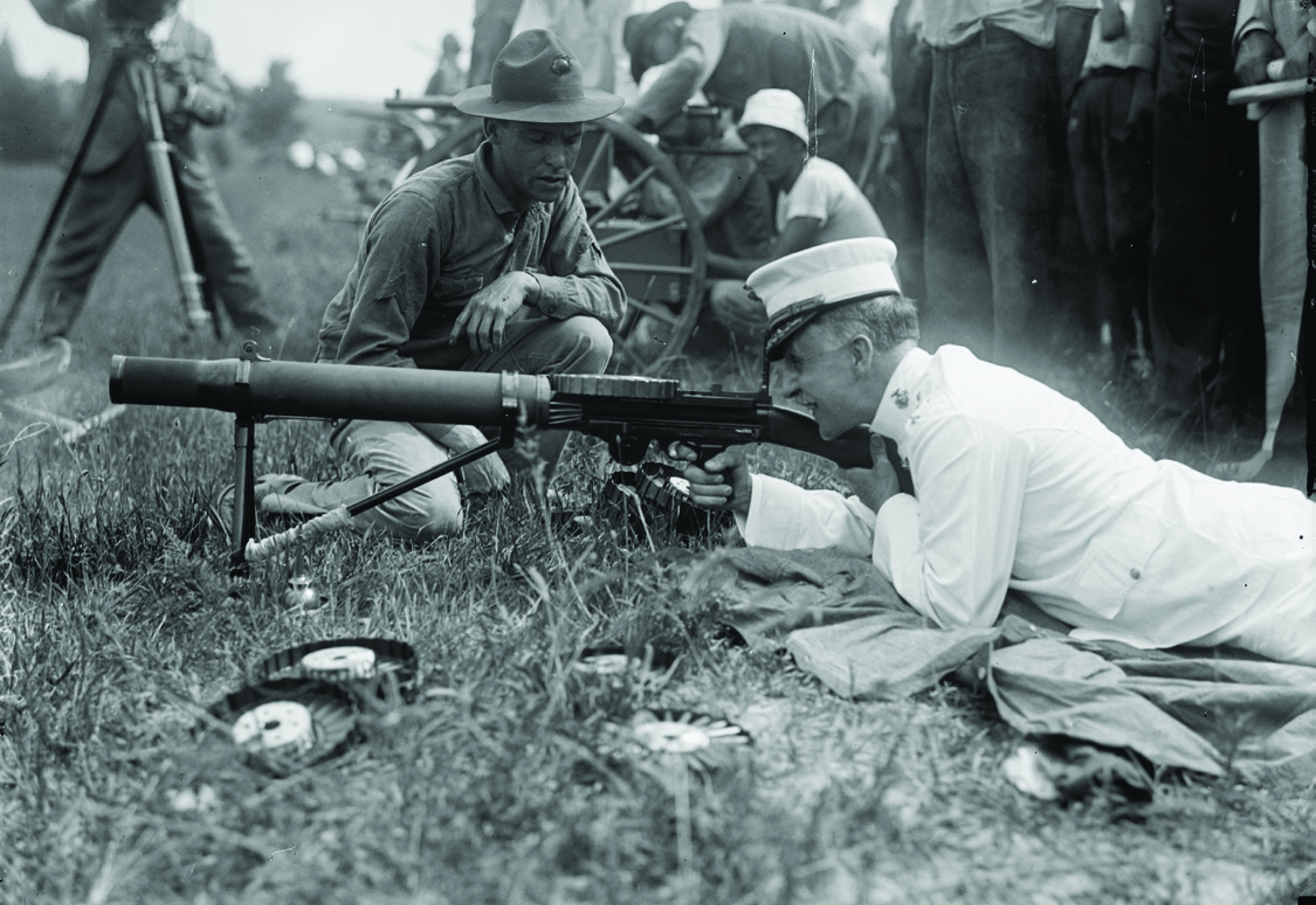
Lauchheimer was promoted to captain in February 1899. He did not serve as an O-3 for long. On March 3, the Senate confirmed President McKinley’s nomination of Lauchheimer to become the assistant adjutant and inspector of the Marine Corps with the rank of major. Writing in his Naval Academy class newsletter, he explained that his new duties included “being Inspector of Target Practice of the Marine Corps, having charge of this entire subject throughout the Corps.”
The first officer to hold the position of Inspector of Target Practice, Lauchheimer strove to improve Marine marksmanship. He oversaw the construction and upgrading of live-fire ranges. He also fostered the Marine Corps’ competitive marksmanship program. After joining the National Rifle Association’s board of directors in 1900, Lauchheimer supervised Marine Corps teams in shooting competitions.
In 1901, Lauchheimer entered a Marine team in a match at an international rifle meet in Sea Girt, N.J. The Marines finished sixth of 11 teams. The following year, the Marines scored sixth of nine in two of the meet’s team matches. Despite being bested by five National Guard teams, the Marines took solace in having beaten the Army for the first time in a team marksmanship competition. Lauchheimer’s best shooter was then-Second Lieutenant Thomas Holcomb, who in 1936 would become the 17th Commandant of the Marine Corps. Holcomb won a $5 prize for finishing seventh overall in the meet’s President Match. Lauchheimer required the lieutenant to relinquish the prize money to the U.S. Treasury because he won it while performing duties at government expense.
In what must have been a bittersweet moment, when Lauchheimer was promoted to lieutenant colonel on March 23, 1903, his duties as Inspector of Target Practice were transferred to a junior officer. Lauchheimer had significantly boosted the Marine Corps’ marksmanship program during his four years in that role.
As a lieutenant colonel, he was dispatched to Manila to establish the office of Adjutant and Inspector of the Marine Corps in the Far East. He also assisted the Attorney General of the Philippines in legal matters involving the Navy Department. Lauchheimer returned to Washington in December 1904 after a year abroad and was soon promoted to colonel, replacing the Adjutant and Inspector of the Marine Corps’ upon his retirement…
However, following his meteoric rise, Lauchheimer suffered a career setback in 1910. He and the Commandant, Major General George F. Elliott, repeatedly clashed, leading to a court of inquiry. The court faulted both Elliott and Lauchheimer for the imbroglio. As punishment, the Taft administration transferred Lauchheimer to Manila. Just a few months from mandatory retirement age, Elliott was allowed to remain as Commandant.
Lauchheimer did not sulk. He actively executed his duties, inspecting various Marine Corps units and facilities in the Philippines. He also won praise for recommending security improvements at the U.S. legation in Beijing after inspecting that facility. His fellow officers demonstrated the esteem in which they held Lauchheimer by electing him president of the Army and Navy Club of Manila.
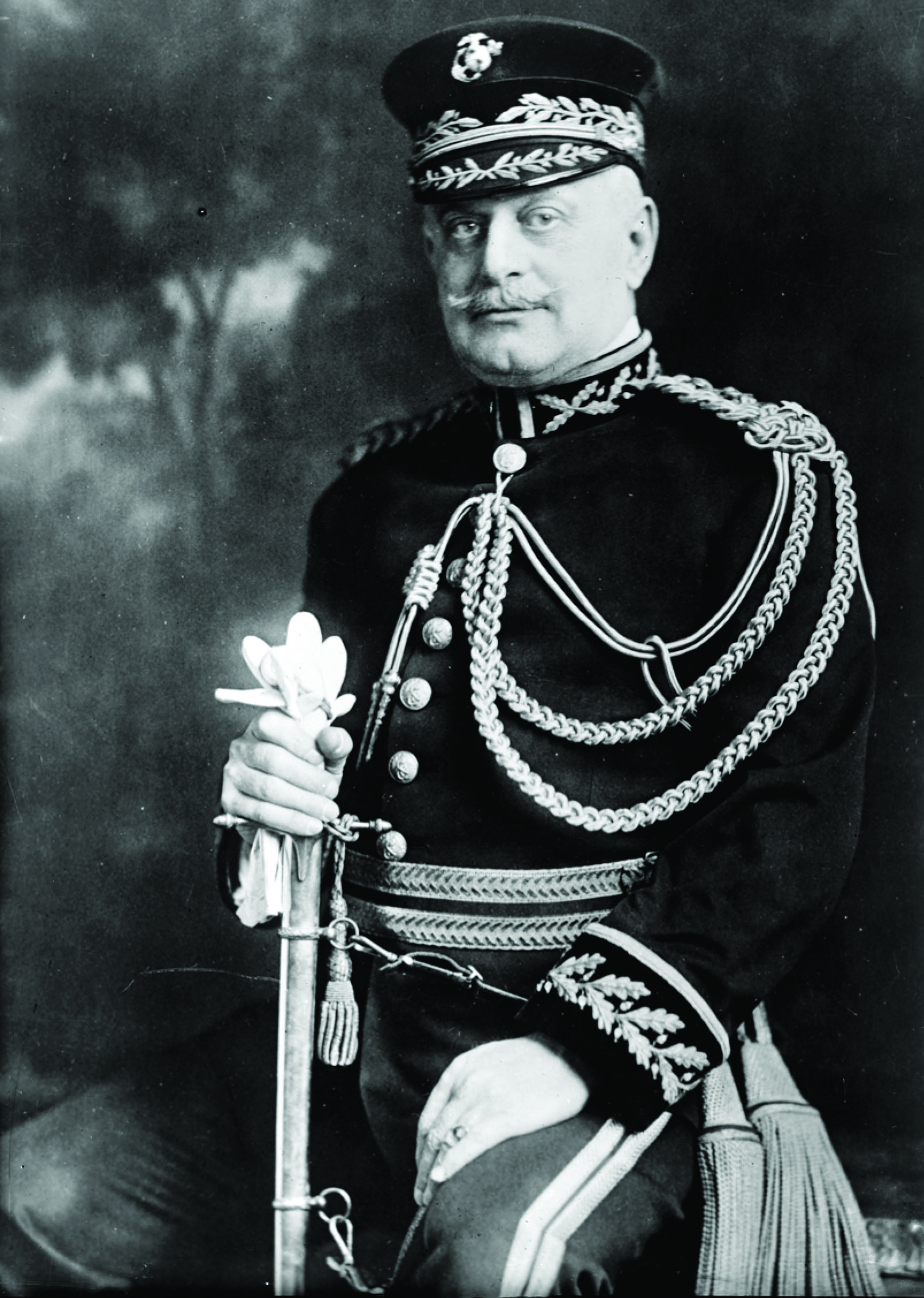
Lauchheimer’s supporters back in the United States mounted a lobbying effort to restore him to his previous position. As a result of that campaign, the Taft administration reassigned Lauchheimer from the Philippines to San Francisco in November 1911. His transfer to the West Coast did not mollify Lauchheimer’s champions, who maintained pressure to reinstate him as Adjutant and Inspector of the Marine Corps. In the presidential election year of 1912, Taft relented. Lauchheimer returned to Headquarters Marine Corps and resumed his duties there in October. By then, Elliott had long since retired, having been replaced as Commandant by the undistinguished but politically well-connected William P. Biddle. Taft badly lost his November 1912 reelection bid, finishing behind both the victor Woodrow Wilson and former President Theodore Roosevelt.
Little more than a year after Lauchheimer’s return to Headquarters Marine Corps, the Army and Navy Club of Washington bestowed the signal honor of electing him as its president. A month later, Lauchheimer’s career received a major boost when his Naval Academy classmate and close friend George Barnett became the 12th Commandant of the Marine Corps. Lauchheimer’s responsibilities grew under Barnett. He assumed control of Marine Corps recruiting and sat on several boards determining Marine Corps policy.
Lauchheimer had thoroughly rehabilitated his career by 1916, when an opportunity arose for further advancement. Following the deaths of 124 Americans and 1,071 others in the German U-boat sinking of RMS Lusitania, President Wilson sought to expand the U.S. Navy. The result was the Naval Act of 1916. The statute authorized the production of 156 new Navy vessels. The Marine Corps shared in the largess: the act created the Marine Corps Reserve and authorized the President to greatly expand the Marine Corps’ size. Most significantly for Lauchheimer personally, the statute created seven new Marine Corps brigadier general billets. One was reserved for the senior officer in the Adjutant and Inspector’s Department. President Wilson chose Lauchheimer for that position. The Senate confirmed the nomination the day after receiving it. On Sept. 8, 1916, Wilson signed the commission appointing Lauchheimer as the first Jewish general officer in United States Marine Corps history.
Less than seven months later, the United States entered World War I. The Marine Corps expanded more than fivefold during the war and Lauchheimer was the officer in charge of filling the ranks. His recruiting effort was remarkably successful. Declining to accept draftees, the Marine Corps positioned itself as an elite all-volunteer force. By the war’s end, the Marine Corps had received 239,274 applications for 60,189 openings. Commandant Barnett lauded Lauchheimer’s oversight of the recruiting campaign.
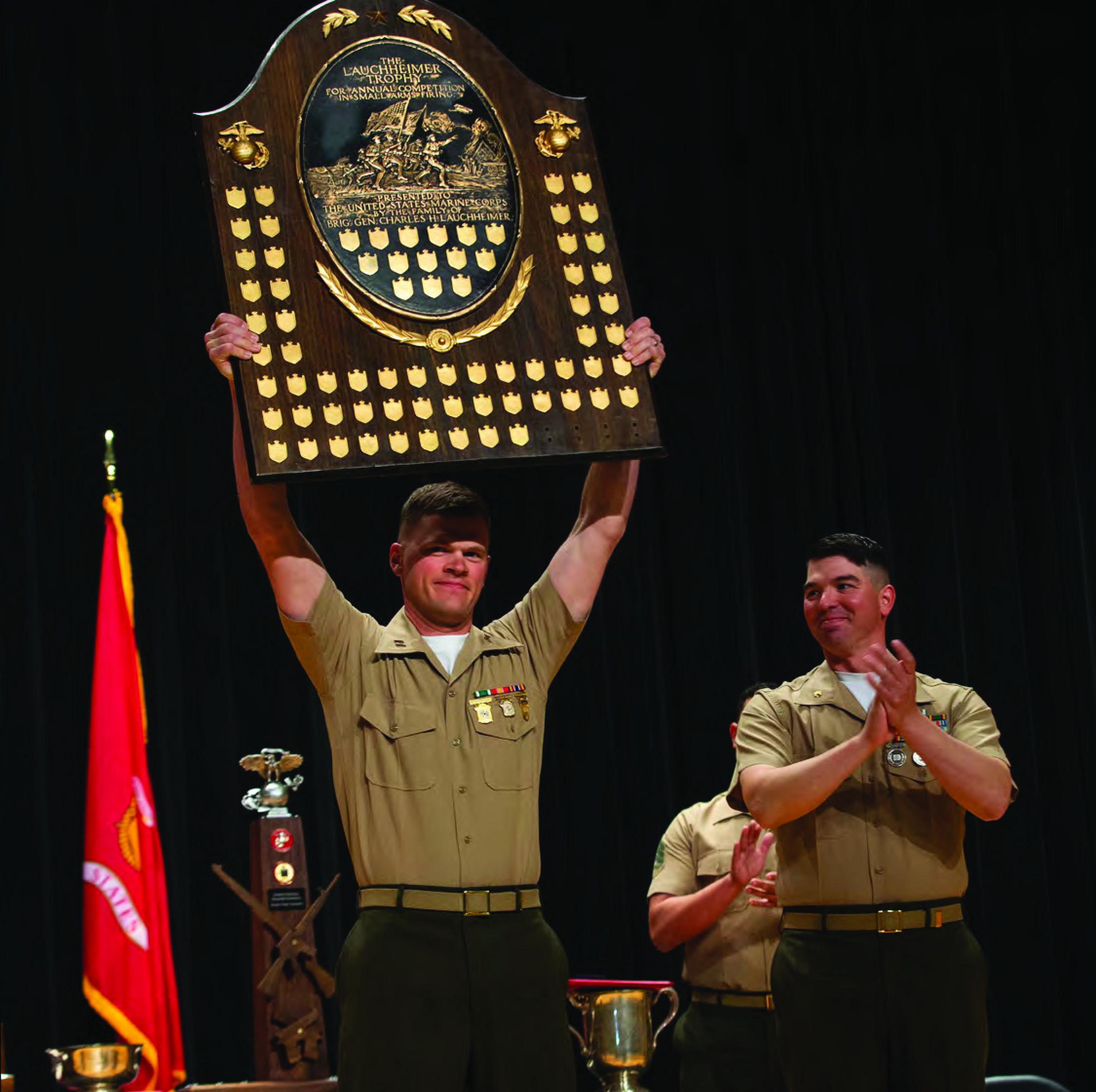
The Wilson administration recognized Lauchheimer’s exceptional performance of wartime duties with the Distinguished Service Medal. Unfortunately, that medal was awarded posthumously. After completing a West Coast inspection tour, the 59-year-old Lauchheimer suffered a severe stroke in July 1919. Following a coma, he suffered paralysis, and he reained hospitalized until dying from another stroke on Jan. 14, 1920.
Lauchheimer’s siblings sought to commemorate his Marine Corps service by establishing a shooting medal in his honor. Commandant MajGen Barnett enthusiastically endorsed the idea, noting that Lauchheimer had been “instrumental in establishing the present system of target practice in the Marine Corps which has placed the Corps, as you know, in the first ranks of the shooters of the United States today.” When John Archer Lejeune replaced Barnett as Commandant on June 30, 1920, he continued to work with Lauchheimer’s family to establish the commemorative shooting award. The result was a bronze relief trophy depicting Marines advancing in battle. Above the battle scene are the words, “The Lauchheimer Trophy for Annual Competition in Small Arms Firing.” Below the battle scene is the inscription: “Presented to the United States Marine Corps by the Family of Brig. Gen. Charles Lauchheimer.” The original 50-pound trophy included 14 small shields on which to engrave the annual winners’ names. The Lauchheimer family also paid to cut the die for a badge to be presented to each year’s top three competitors.
When they presented the trophy to the Marine Corps, Lauchheimer’s siblings explained that they donated it “as a means of keeping his name before the Marine Corps, to which he devoted his life, and for which he felt a love, affection and loyalty so well known to all his comrades and associates.” Commandant Lejeune replied that the trophy’s commemoration of “the distinguished services rendered by your brother, the late Brigadier-General Charles H. Lauchheimer, will forever enhance its value to every Marine.”
The first Lauchheimer Trophy competition was held in 1921. Over the past century, the original brass plaque has been remounted twice to accommodate more nameplates for the annual winners. The trophy’s presentation to the Championship Match’s top shooter in April will once again honor Charles H. Lauchheimer’s role in developing Marines’ marksmanship prowess.
Author’s Bio: Colonel Dwight H. Sullivan, USMCR (Ret), is a civilian attorney in the DOD Office of General Counsel and an adjunct faculty member at the George Washington University Law School. He is the author of “Capturing Aguinaldo: The Daring Raid to Seize the Philippine President at the Dawn of the American Century.”




